








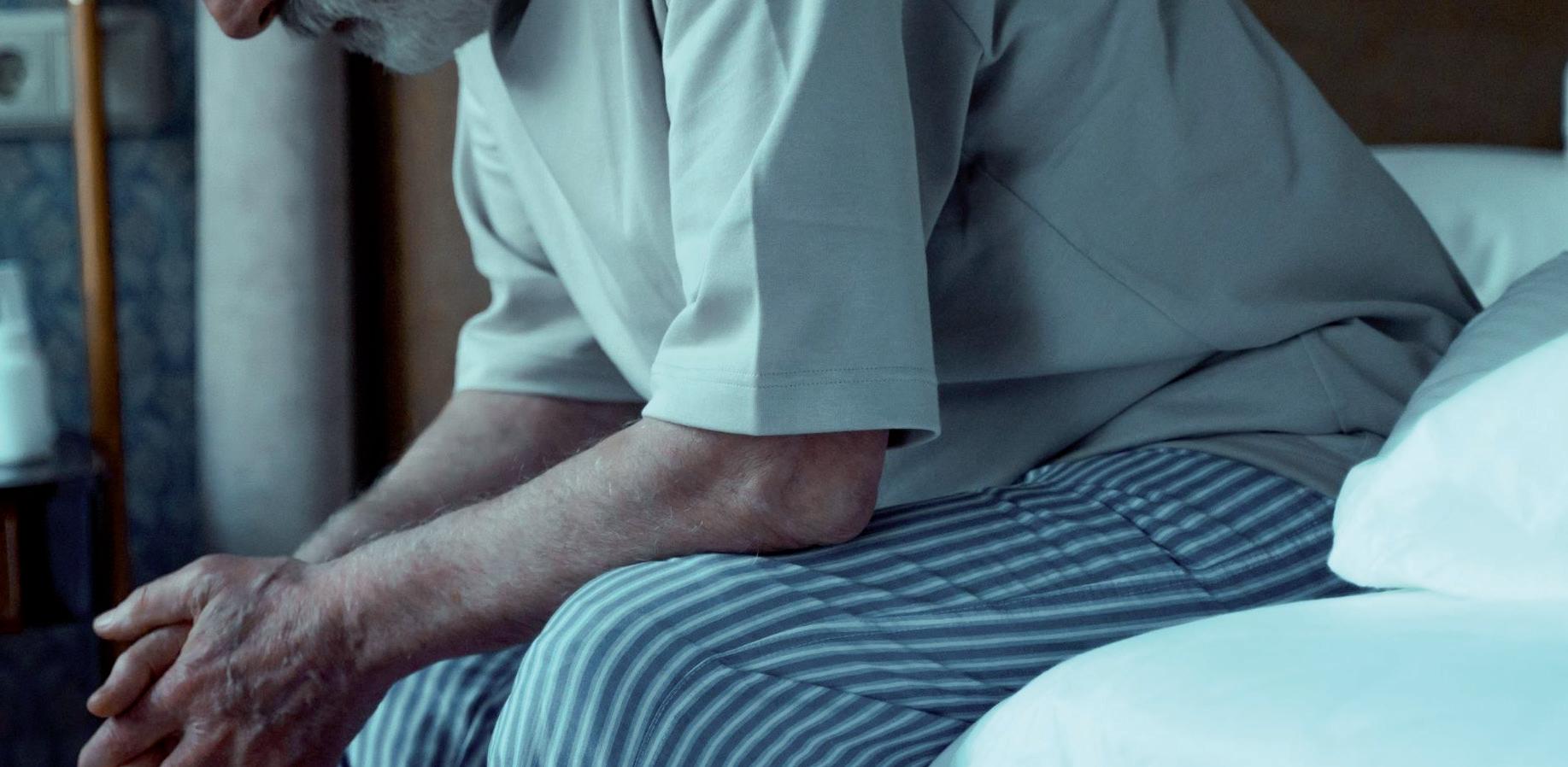
n this issue, we focus on the laundryan area that often brings up concerns about misplaced garments or residents accidentally wearing someone else's clothes. However, beyond these everyday issues, managing laundry in aged care facilities is a crucial yet challenging task, especially when it comes to preventing infections. With the constant handling of soiled linens and the ongoing risk of cross-contamination, maintaining strict hygiene standards is essential. As the demand for aged residential care continues to grow in New Zealand, implementing rigorous infection control measures in laundry processes becomes increasingly vital.
The laundry room in an aged care facility should be designed with infection control in mind. This includes using impermeable materials for surfaces and flooring to prevent fluid absorption and reduce cross-contamination risks. Implementing colourcoded cleaning systems can simplify training and improve consistency in hygiene practices, ensuring that cleaning standards are maintained despite potential language barriers among staff.
Infection prevention in laundry processes extends beyond just washing and drying. Proper handling of soiled linen with staff equipped with PPE, especially when dealing with high-risk
contaminants. The prompt removal and correct storage of soiled items, followed by immediate transfer to laundry facilities, are essential steps in preventing the spread of infections.
Adhering to standards that specify the required temperatures and times for disinfecting laundry, together with high-quality detergents and antibacterial washes tailored for aged care settings, further enhances infection control. An area that can be missed is the regular maintenance and disinfection of laundry equipment, along with proper ventilation, to help prevent the growth of bacteria in laundry areas.
The elderly are more susceptible to infection, so the role of laundry staff in safeguarding residents' health is significant. Although often demanding with long hours and lower pay, those who work in aged care laundry services are on the front line of infection prevention, ensuring that facilities remain safe and hygienic for all residents.
Tania Walters, Publisher tania@reviewmags.com
PUBLISHER: Tania Walters
GENERAL MANAGER: Kieran Mitchell
EDITORIAL DIRECTOR: Sarah Mitchell
EDITOR-IN-CHIEF: Caitlan Mitchell
EDITORIAL ASSOCIATES: Sam Francks, Jenelle Sequeira
ADVERTISING SALES: Caroline Boe
SENIOR DESIGNER: Raymund Sarmiento
GRAPHIC DESIGNER: Raymund Santos
BUSINESS OF RETIREMENT VILLAGES & AGED CARE
2815-7478 (Print) ISSN 2815-7486 (Online)
6, Heards Bldg, 2 Ruskin St, Parnell, Auckland New Zealand P: +64 3040142 Email: edit@reviewmags.com

12 Health and Safety in the Laundry
8 Star Rating Deception
A star rating system across the Australian aged care sector has caused controversy, labelled ‘deceptive’ and accused of being used as a political tool.
10 Operating an Essential Service
There are many requirements involved with operating an efficient laundry service within the aged care sector that are integral to industry standards. Although offering a personal service will meet resident satisfaction, there are a number of steps laundry services should undertake in order to meet legal requirements as well.
Demand for aged care in New Zealand is rife, as many forecasts have predicted an additional 15,000 beds will be needed before 2030.
14 Ōtau Ridge, Metlifecare
Ōtau Ridge is the first retirement village in Aotearoa registered to Green Star Communities. The trailblazing registration signposts a project poised to deliver big social and environmental outcomes.
18 Bupa opens new care home in Whangārei
Increases aged care bed capacity in Te Tai Tokerau, Northland
20 Grand Opening for Miriam Corban Village
Ryman Healthcare’s latest village, Miriam Corban Village, has officially opened in style. 6 Village



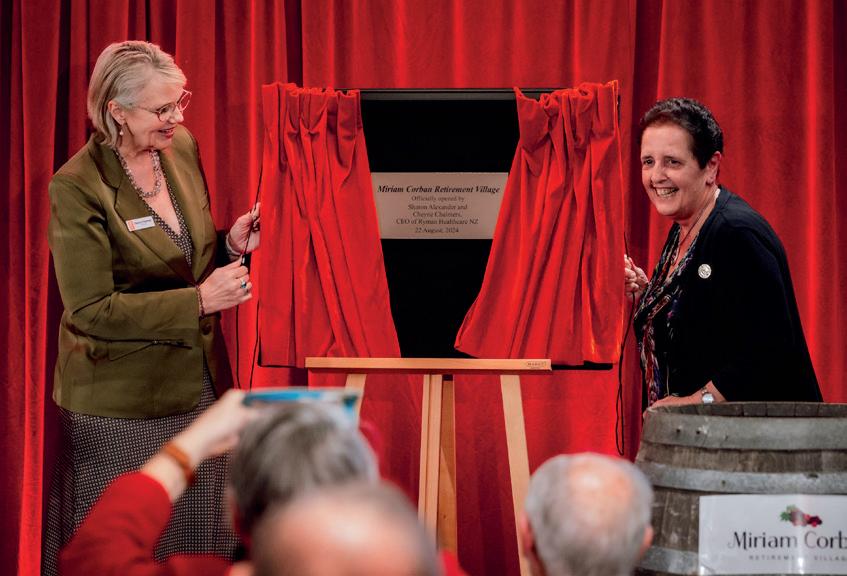
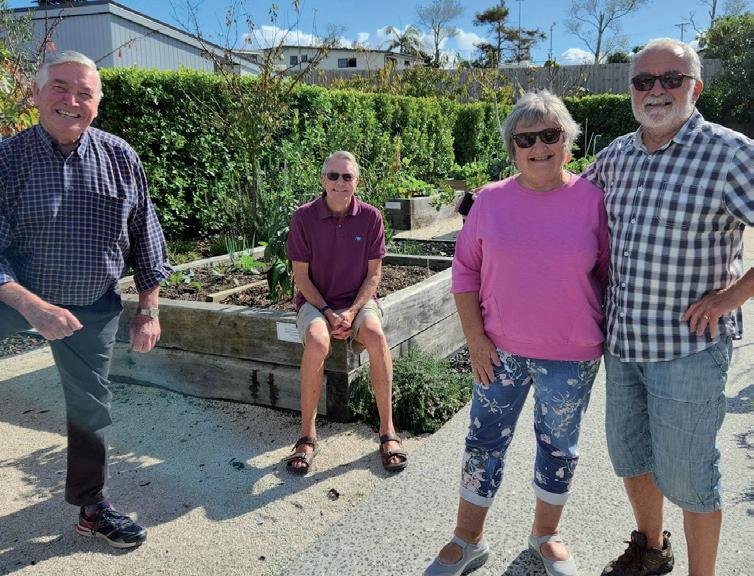

24 Sights Set on Green Future
Thames retirement village and care home, Bupa Tararu, has made significant strides toward a greener future, and has embarked on a programme of work to eliminate gas and become fully electric.
25 Enviro Groups for Village Focus
Across 21 Metlifecare villages, there are resident-led ‘Enviro Groups’ that have driven impactful sustainability initiatives within their village communities.
26 A Taskforce for All: Designing a Collaborative and Sustainable Aged Care Model
In the aged care sector, planning for the future is not just a necessity - it’s a responsibility. Numerous reports have persistently raised significant concerns regarding inequities in access created by geographical and financial barriers, workforce pressures, and funding models that are no longer fit for purpose.
28 First of its Kind
Metlifecare’s new ‘Weiti Care’ building, located at Gulf Rise Village in Auckland’s Red Beach, has officially become the first aged residential care home in New Zealand to be certified with a globally recognised Six Green Star sustainability rating. This was certified by the New Zealand Green Building Council (NZGBC).
30 Faces Of Maree Herman
Keith Park Village, Hobsonville, Auckland
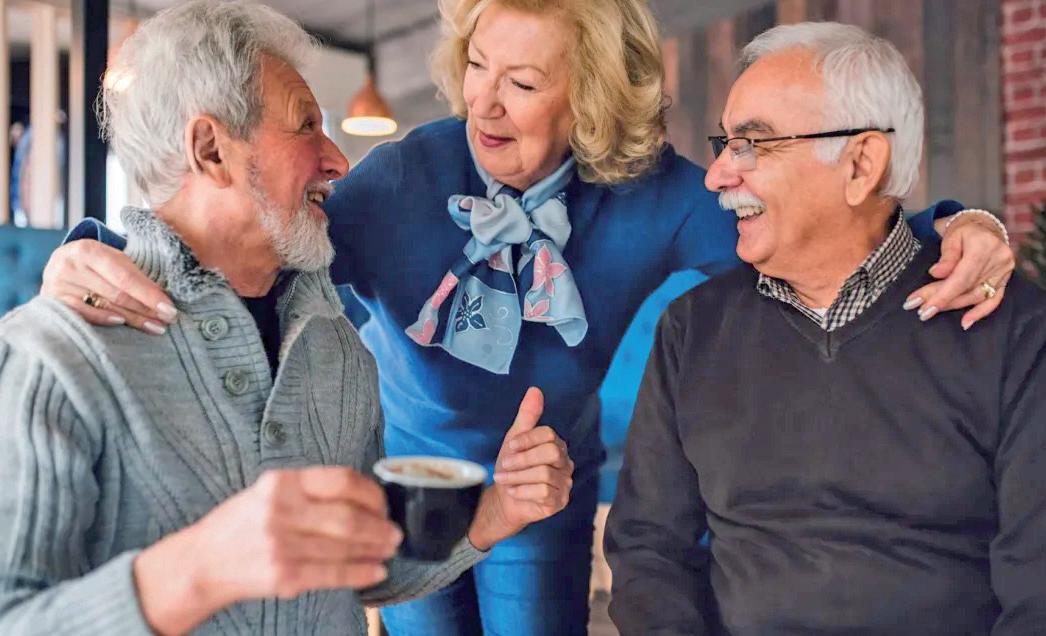
AUSTRALIA | A leading aged care financial expert is calling for a fundamental shift in how aged care services are funded if the Federal Government is to address the crisis in the sector.
Speaking on Ryman Healthcare’s Pod of the
Private US equity firm, Stonepeak, has proposed a NZD $1.3 billion takeover offer to Arvida.
The offer of NZD $1.70 per share was at a 65 percent premium to Arvida's closing price on Friday. A similar bid was rejected by Arvida in September last year, disclosed as inadequate.
In a letter outlining the Scheme to its shareholders, the Arvida Board has unanimously recommended that shareholders vote in favour of the scheme, which is subject to the scheme consideration being within or above the independent adviser's valuation range for Arvida shares and in the absence of a superior proposal.
The Board concluded the offer price of NZD $1.70 per share in cash represents compelling value given the material premium, high certainty to completion and
3rd Age Podcast, Aged Care Gurus Principal Rachel Lane said care should be funded based on a person’s needs, not on where they choose to live.
“I would like to see a situation where the funding you can get for your care is the same if you choose to live in your own home – whether that’s a retirement community, a house in the suburbs, a granny flat, whatever –or if you choose to live in
residential aged care.”
Lane said the current Home Care Packages funding model meant people accessing packages in their own homes could receive less than half the amount of funding they would than if they lived in residential aged care.
“Residential aged care is funded up to $151,900 a year and that’s just talking about funding for care,” she said.
Read more here

overall attractiveness to Arvida shareholders. Grant Samuel has been engaged to prepare the Independent Adviser’s Report to assist Arvida’s shareholders in assessing the merits of the Scheme.
Read more here
The Retirement Commissioner has reignited calls for changes to the Retirement Villages Act and for the industry to support the development of a better, more equitable framework.

Speaking at the Retirement Villages Association (RVA) conference in Wellington, Retirement Commissioner Jane Wrightson laid out four key areas she argued needed addressing.
“The history of solving problems has been fairly erratic and even reviewing the Code of Practice seemed to be difficult. When I looked at the legislation, I saw it was very light touch – in itself not a bad thing – but that the processes to consider change and improvement were poorly developed, and overcomplicated by the presence of an Act, regulations, and a Code which had all become a bit messy with tinkering over the years,” she said.
Read more here

Saving for retirement has remained at the forefront of financial priorities for New Zealanders, as outlined in a new report by the Retirement Commission.
Latest insights on how New Zealanders feel financially have
revealed that despite more than half describing their position as uncomfortable, they are still actively saving for retirement.
Te Ara Ahunga Ora Retirement Commission has used research agency TRA to survey 3000 New
Zealanders a year about a range of money matters.
The latest findings show that 56 percent of New Zealanders describe their financial position as uncomfortable, however the economic pain is not felt evenly. Financial discomfort for
women has significantly worsened since 2022, from 51 percent to 60 percent. Not surprisingly, then, 64 percent of women report feeling financial stress.
Those in the 18 to 35 age group are also feeling the squeeze, with 54 percent now reporting they feel uncomfortable, up from 46 percent in 2022, and 82 percent feeling financial stress, up from 76 percent in 2022.
Sorted Personal Finance Lead Tom Hartmann said although it’s quite concerning to see so many New Zealanders struggling financially, it was good that some could still manage to actively save for the long term. Read more here

A star rating system across the Australian aged care sector has caused controversy, labelled ‘deceptive’ and accused of being used as a political tool.


Since it was introduced by the incumbent Albanese Government two years ago, the system has come under scrutiny by former government compliance staff, who have spoken out about its validity.
The system’s purpose was to combat issues that arose following the publication of a damning report of elder abuse and neglect by the Royal Commission into Aged Care Quality and Safety. The system has ranked aged care facilities based on the level of care of residents across the board.
Aged Care Minister, Anika Wells has defended the system, stating that it was designed to open up a transparent conversation and provide potential residents about choosing a facility they are comfortable with. Since its launch in 2022, Minister Wells said that there had been a 27 percent increase in four and five-star ratings.
However, former government compliance staff said the reality is that all other data sources have indicated the sector has gotten worse. Some have also implied that the
system was designed to over-inflate the star ratings system in order to demonstrate the quality of care had improved.
An example used in Australian media was the Wallsend aged care home in Newcastle, owned by the New South Wales Government. The facility was awarded a fivestar rating whilst subject to a government audit, which found the home to be non-compliant with all eight of the system’s standards.
Despite a glowing rating, the Government’s own requirements of the system outlined that any noncompliant facilities could not be awarded more than two stars.
The Aged Care Commission recently clarified that star ratings would only come into affect if facilities had regulatory action taken against them. Former compliance staff said that this loophole has been used to alter the statistics.
Another loophole has been that when ownership of facilities changes hands, its previous history is erased. This includes any sanctions issued and a new timeframe for audits to commence. Following the change of ownership, no star rating is imposed either for the next 12 months.
Former staff said this was a consequence to the general public, who are unaware of the current state of any facility in that position. They will also be unaware of its previous history.
The star-rating system is currently under review by an external consultancy.


Potato Waffle
85g, Box 48pcs
A waffle with a creamy mashed potato center and thinly sliced potato, encased in a crispy exterior. Simply heat it up and its ready to be used for main courses or as a base for canapes. Vegetarian Friendly.




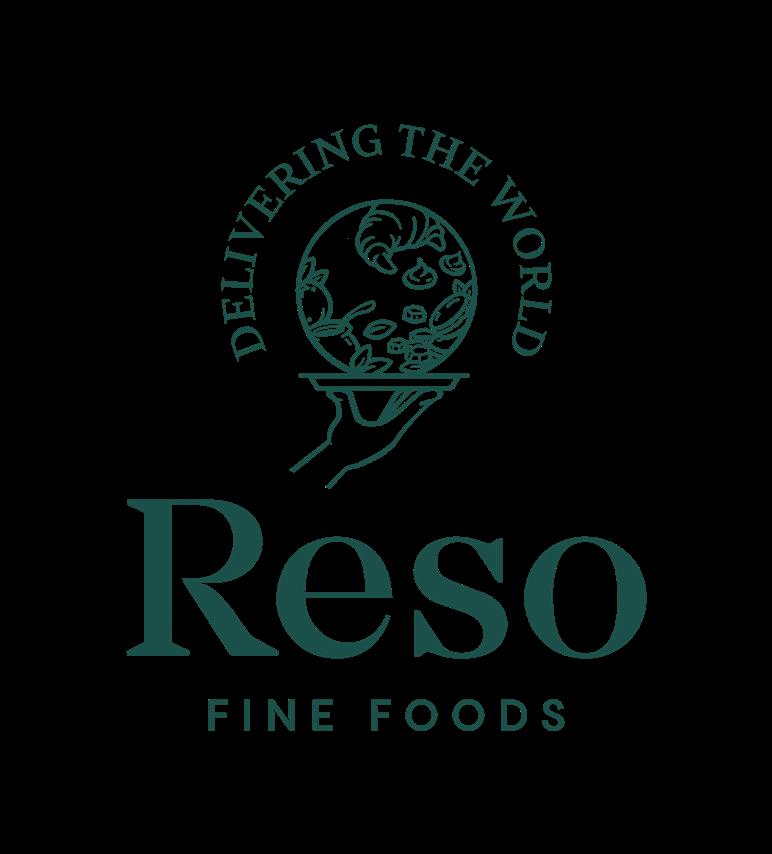
4 trays, 12pcs per tray. 48 pcs total
An assortment of oven ready, quick and easy Canapes. 4 flavours, Butternut Squash Mini Cake, Artichoke & Spinach Cream Rosti, Comte Bechamel Gougere and Tomato Mozzarella & Pesto Croque. Vegetarian Friendly.

Ready to use creamy spreads with a delightful full bodied taste. Packaged in a 5kg tub, these are perfect for filling cakes, crepes, croissants, tart shells and other pastries. Additionally, the chocolate hazelnut variant can be used as a drizzle on desserts or ice cream.
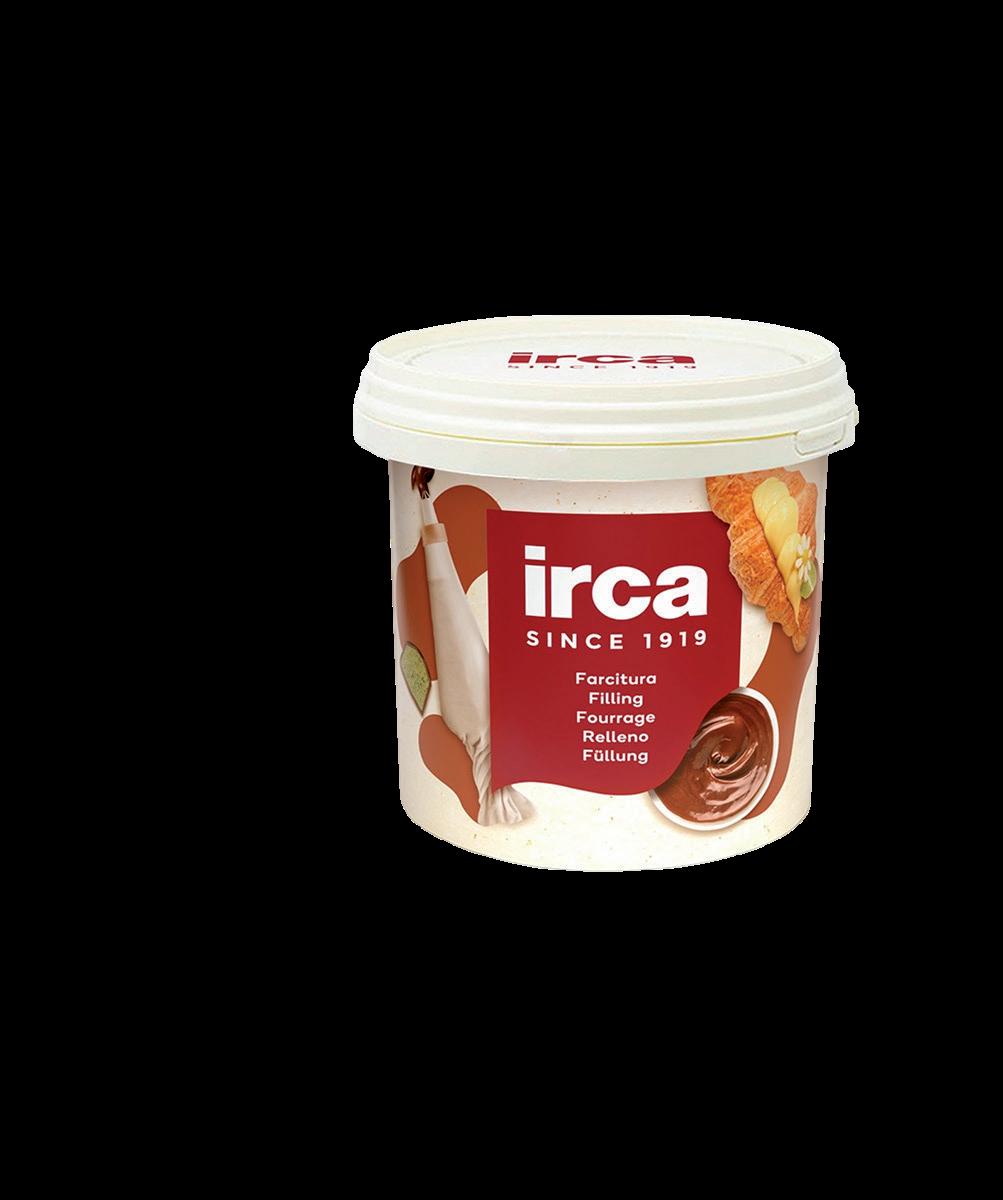
5kg Bucket
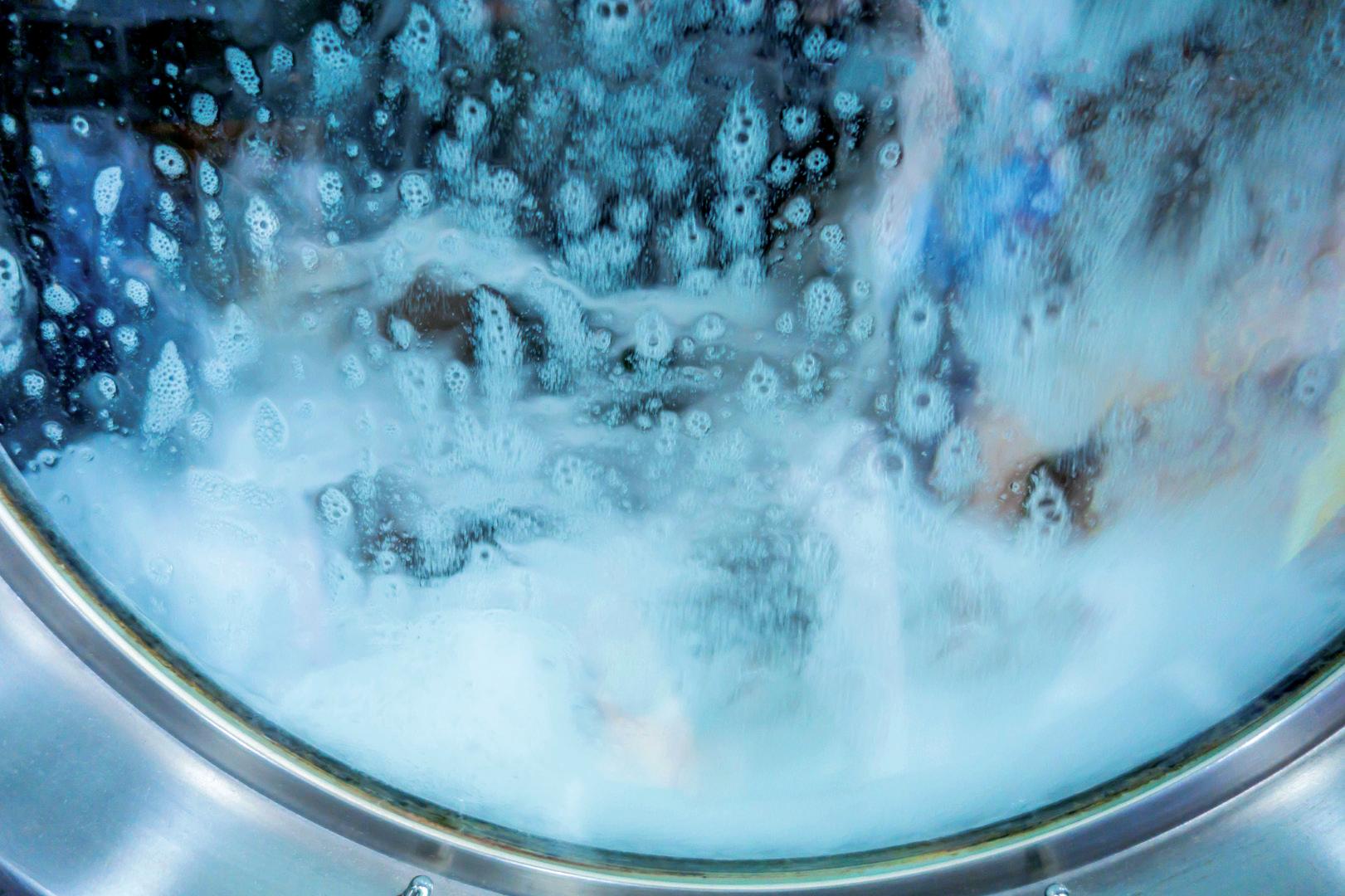
There are many requirements involved with operating an efficient laundry service within the aged care sector that are integral to industry standards. Although offering a personal service will meet resident satisfaction, there are a number of steps laundry services should undertake in order to meet legal requirements as well.

aundry Association Australia CEO Luke Simpkins said that, ultimately, the essential requirements of operating an efficient laundry service are to understand the costs and to comply with standards.
Simpkins said it was important that the aged care sector complies with the Australian and New Zealand standard for laundry practice, ASNZS 4146:2000, in order to ensure a quality and safe service.
Given the past and ongoing challenges of viruses and soiled textiles at aged care facilities, Simpkins argued the safety and health of the residents of facilities demanded a standards compliant approach.
Compliance, however, has provided a challenge to laundries at aged care facilities, such as the required water temperatures and durations, the barriers between soiled and clean areas, record keeping, mandatory supervision and other consistent standards.
Simpkins said there has always been room for improvement, and the ability of aged care facilities to provide laundry services that are compliant with industry standards should be a verified claim.
“This acknowledges that an on-premise laundry operated by one person, without a

barrier between clean and soiled sides can never be compliant, and when looking at the whole standard, there are other significant obstacles for a typical on-premise laundry to achieve compliance,” he said.
Laundry Association Australia suggested that proper training for all personnel involved in the laundry process was crucial. The standard has required staff to be trained in safe handling practices, equipment operation and hygiene standards.
Regular maintenance and servicing of laundry equipment are also critical in order to ensure safety and operational efficiency. The standard has provided guidelines for the maintenance of washers, dryers, and other machinery used in the laundry process.
Hygiene standards are among the most important steps for laundry staff to undertake. The standard has set requirements for maintaining cleanliness and hygiene in the laundry environment. This has emphasised the significance of protocols for cleaning laundry equipment, handling soiled linen, and preventing cross-contamination.
There are also guidelines for implementing quality control measures to ensure the laundry service offered by aged care providers has met specific industry standards. This may involve regular checks and audits to ensure
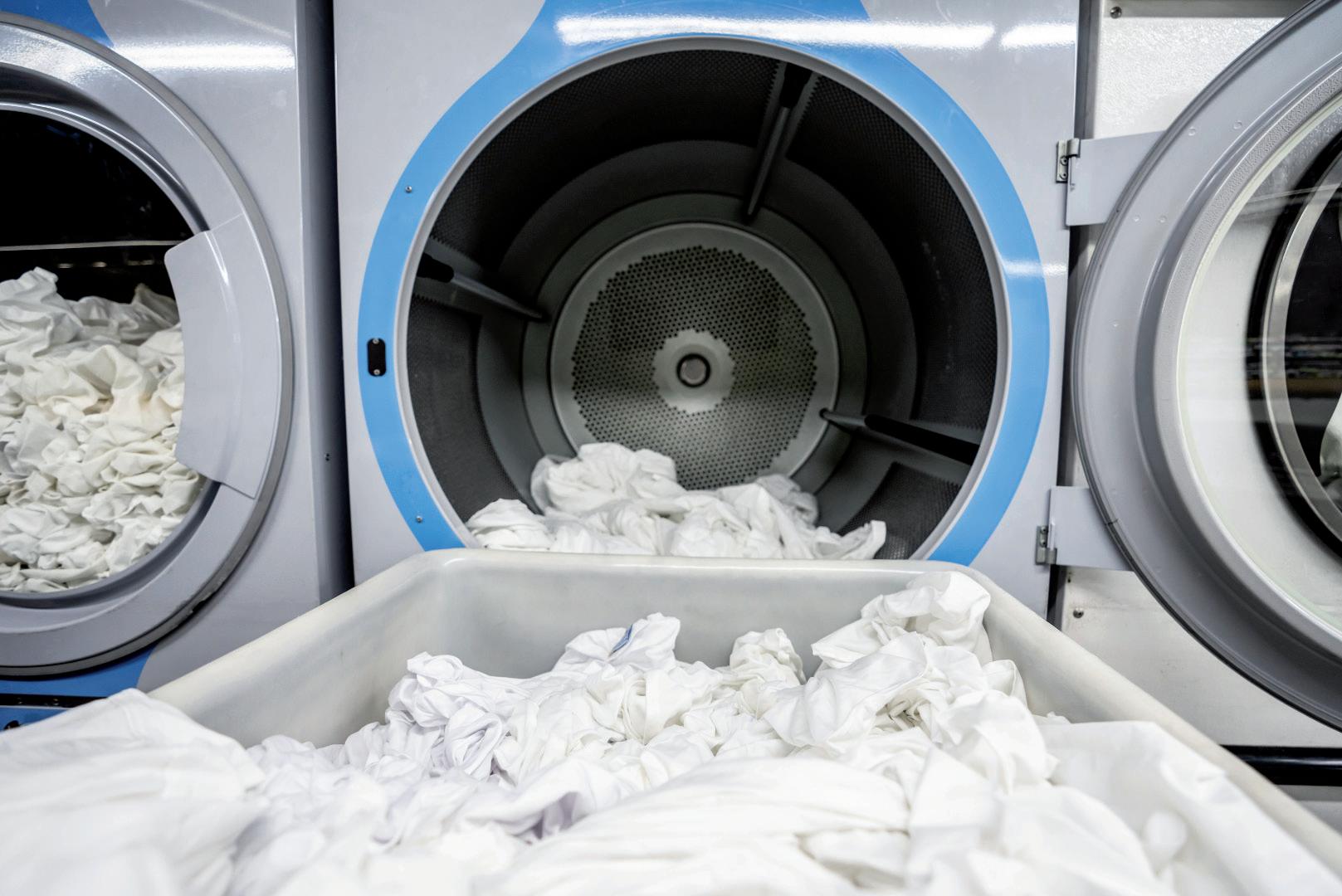
that laundry processes are effective and compliant with the standard.
Maintaining accurate records and documentation related to laundry operations, including safety checks, maintenance schedules and training records is also required to ensure compliance and facilitate audits.

Demand for aged care in New Zealand is rife, as many forecasts have predicted an additional 15,000 beds will be needed before 2030.
s the number of residents in aged care facilities increases, so does the demand for its services. Among these, laundry operations play a crucial role, ensuring the health and safety of residents and staff.
As residents age, their susceptibility to infections and diseases increases. This makes efficient laundry service not just a necessity, but a key factor in preventing health issues in aged care facilities.
When handling laundry items, especially used or soiled garments or linen, it is vital for staff to ensure a high standard of care and measures are in play without the spread of diseases.
The responsibility of maintaining safety in aged care operations lies with the operators.
Adhering to good practices, such as using PPE garments, can significantly reduce the risk of contamination. In situations with a high risk of contamination, such as handling garments with human disgorge, the use of gloves and face shields has become crucial for the health and safety of the staff.
Proper collection and transportation of laundry is also an important step to undertake. By quickly removing soiled clothing and linen, it can minimise risk of any contamination. Minimising contact with garments when being transported to and from the laundry will also reduce any health and safety issues.
The use of detergents will also have a great effect on the quality of laundry service providers can offer. The removal of dirt, stains and bacteria is important for residents’ health



and safety, and will also reduce any possibility of contamination. However, it is vital to ensure that any detergent used in the laundry has met industry standards and is safe to use for all residents.
Maintaining a clean and well-maintained laundry environment is vital, especially when concerning the health and wellbeing of residents. Regular checks have been encouraged for laundry equipment such as dryers, washing machines, and carts, and proper ventilation within the facility will help prevent moisture buildup and stop bacterial or fungal growth. Frequent inspections will also help to keep the facility clean and tidy, as well as the immediate replacement of any damaged equipment.
For any service within the aged care sector, timing can be difficult to predict. Allowing
enough time for garments and lines to be properly washed and sufficiently dried will provide a better service to residents, as well as limit any potential health risks. Ensuring that residents have their laundry returned to them as soon as possible will also boost their satisfaction and create peace of mind for them and their families. Making sure that residents have the right garments is also important. Families can often be concerned when their loved ones are wearing someone else’s clothes or have lost various items. Naming garments is essential to prevent any mishaps.
A strong foundation of requirements will offer residents the best possible laundry service, as well as a personalised and efficient way to prevent any health and safety concerns within the facility.

Ōtau Ridge is the first retirement village in Aotearoa registered to Green Star Communities. The trailblazing registration signposts a project poised to deliver big social and environmental outcomes.
Name: Ōtau Ridge
What: low-density retirement village including 122 villas (38 villas in Stage one are targeting 7 Homestar ratings), a 41 bed care facility (rest home/ hospital level) targeting a 6 Green Star rating, clubhouse, pool pavilion, wellness centre, redeveloped historic cottage (c. 1870) for community integration
Occupancy: approximately 200 residents
Where: centre of Clevedon township; 20 hectare greenfield site; 30 mins drive from central Auckland
Big picture: Ōtau Ridge will be Metlifecare’s 37th operating village in Aotearoa when it opens later this year
Background of the name: gifted to Metlifecare by Ngāi Tai ki Tāmaki; the name Ōtau translates to a safe crossing place on the adjacent awa Te Wairoa
Address: 17 Clevedon-Kawakawa Road, Clevedon Tāmaki Makaurau Auckland
Owner: Metlifecare
Project GSAP: eCubed Building Workshop Ltd Architect: Designgroup Stapleton Elliott (villas); Foley Group (club house/care facility)
Landscape Architect: Studio Pacific Architecture
Main contractor: GJ Gardener Homes (villas); Gibson O’Connor Construction (club house/ care facility)
Building services: Mesh Consulting
Project status: earthworks October 2022; construction commenced July 2023; first stage villa residents expected late 2024, four further stages; village completion expected mid 2027

Project certification: targetting a 4 Star Green Star Communities rating (registration March 2024)
Metlifecare says registering its Ōtau Ridge project to Green Star Communities is about leadership, boldness and striding forwards on its green journey.
The company is already a standout industry leader in the Green Star space with six of its new care facilities targeting 6 Green Stars and many of its new villas targeting 7 Homestar ratings.
Metlifecare senior development manager, Joe Bartley said its Ōtau Ridge Green Star Communities registration is a logical next move which will deliver green gains for people and the planet.
“To date we’ve concentrated on our sustainable building stock – for example our 6 Green Star care homes. However it’s people
To date we’ve concentrated on our sustainable building stock – for example our 6 Green Star care homes. However it’s people that bring the buildings to life and form a community. So this Green Star Communities registration is all about bringing together sustainable form and function.
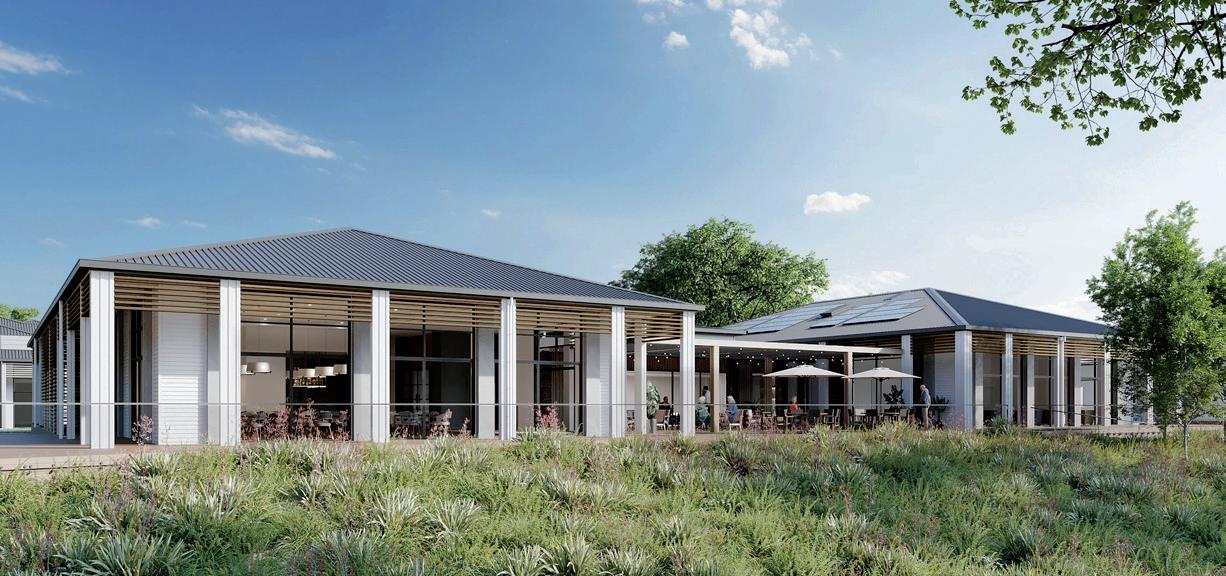
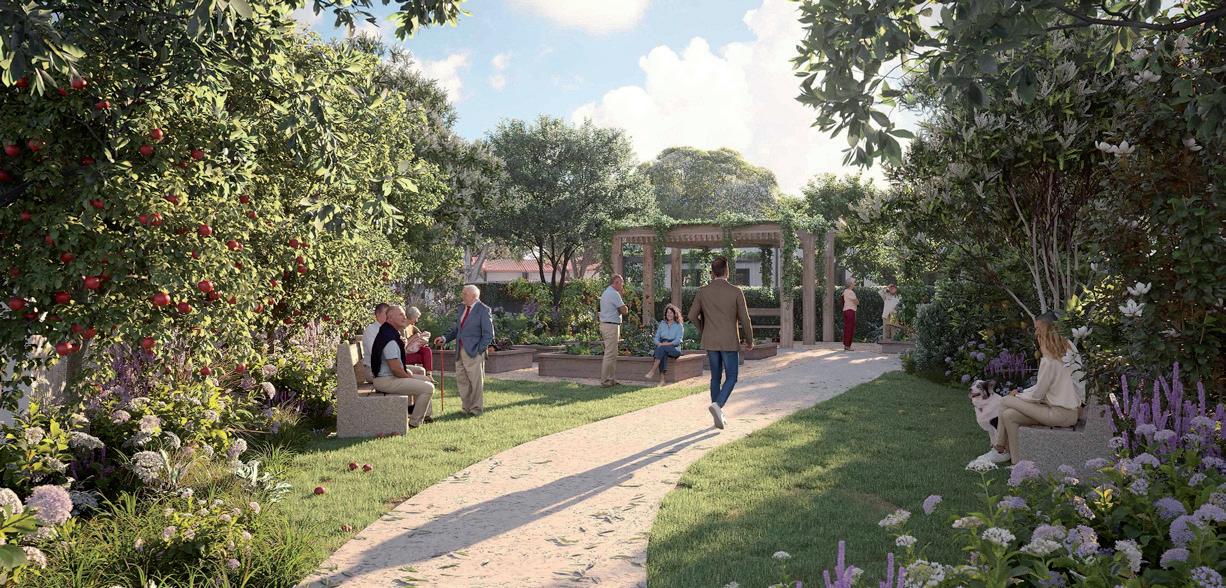
that bring the buildings to life and form a community. So this Green Star Communities registration is all about bringing together sustainable form and function.”
He said an overarching benefit of the registration includes the opportunity to engage with residents, employees, suppliers and the local Clevedon community where relevant, for valuable input and partnerships on decisions and activities that will drive innovative green outcomes for the village.
Those partnerships have already manifested in Metlifecare learning from local iwi about reintroducing native flora and fauna to foster the nearby native bird population - the entrance to Ōtau Ridge is framed with Kawaka trees which are endemic to the area - and supporting the ecological regeneration of adjacent wetlands and riparian planting along the awa Te Wairoa riverbank.
Continued on page 14.

Continued from page 13.
NZGBC senior manager buildings and communities, Brad Crowley said the Green Star Communities registration will ensure the project does what it says it’s going to do.
“It encourages international best practices and infrastructure. It eliminates green washing through third party verification and it ensures all sustainable commitments made by Metlifecare are not value engineered out of the project.
“Experience in Australia and Aotearoa shows Green Star Communities can deliver dynamic social and environmental upshots for local communities and propel developers and investors to leave a positive legacy for the future,” said Crowley.
Delivering those outcomes has shaped the design vocabulary of Ōtau Ridge.
According to Metlifecare Group Design Manager, Gemma James the composition of the village includes:
• fosters a community offering a sense of belonging and security
• seamlessly integrates with its local landscape
• honours the land and its cultural sensitivities
• recognises ongoing engagement with Ngāi Tai ki Tāmaki is essential to achieving strong integration between the built and landscaped environment
• references the architecture of the historic cottage on site
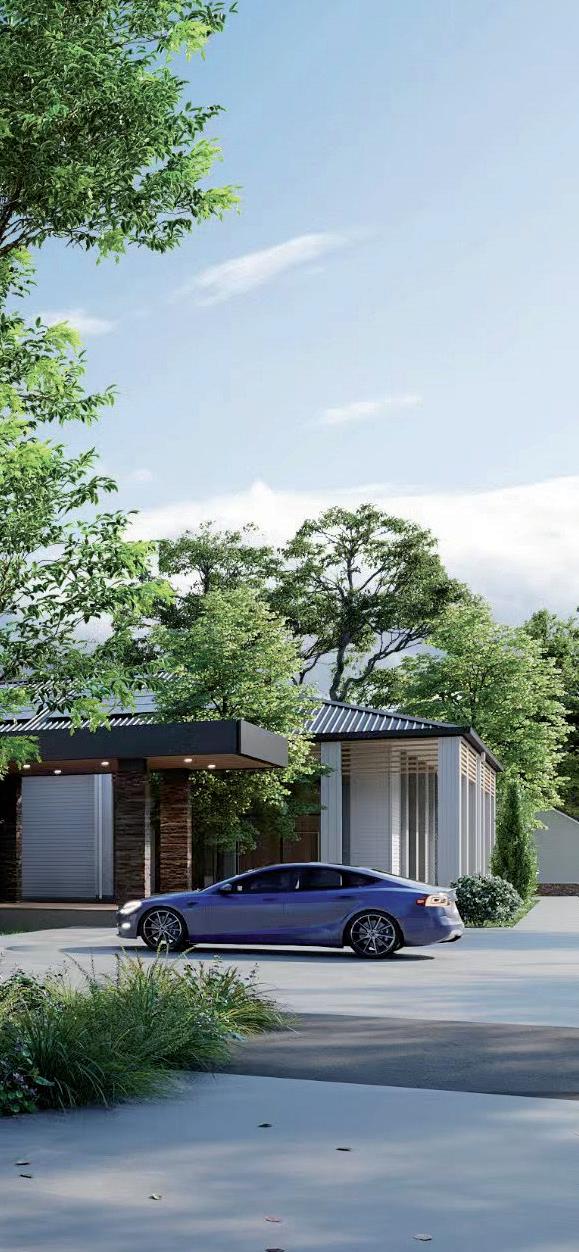
• references the colours of the local context
• features solar panels, an energy efficient infrastructure and targets reduced greenhouse gases (no reticulated gas on-site)
• A range of design and delivery initiatives at Ōtau Ridge align with the five impact categories used to assess Green Star Communities, said Metlifecare.
These initiatives include implementation of the climate change adaption plan; waste reduction during construction; encouraging healthy living with a new pathway network, pocket parks and cycle facilities; undertaking Life Cycle Assessments (LCAs); light pollution reduction to improve the local ecosystem;
Experience in Australia and Aotearoa shows Green Star Communities can deliver dynamic social and environmental upshots for local communities and propel developers and investors to leave a positive legacy for the future.

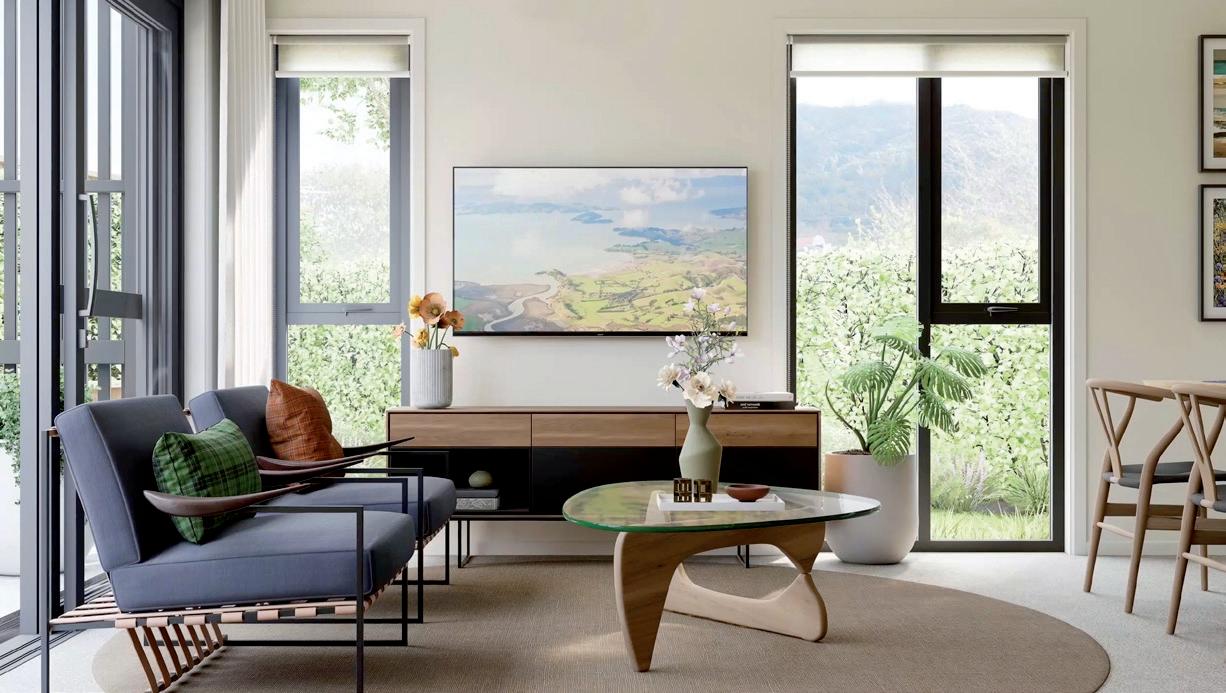
residential recycling system to promote sustainable living.
Metlifecare said its Ōtau Ridge Green Star Communities registration showcases its dedication to being loud and proud about sustainability in the New Zealand retirement village sector.
Green Star Communities will pilot the delivery of a human-centric village embedded with sustainability across design, construction and infrastructure. Within the village the rating tool will deliver an enhanced social environment where residents are inspired to lead their best green lives.
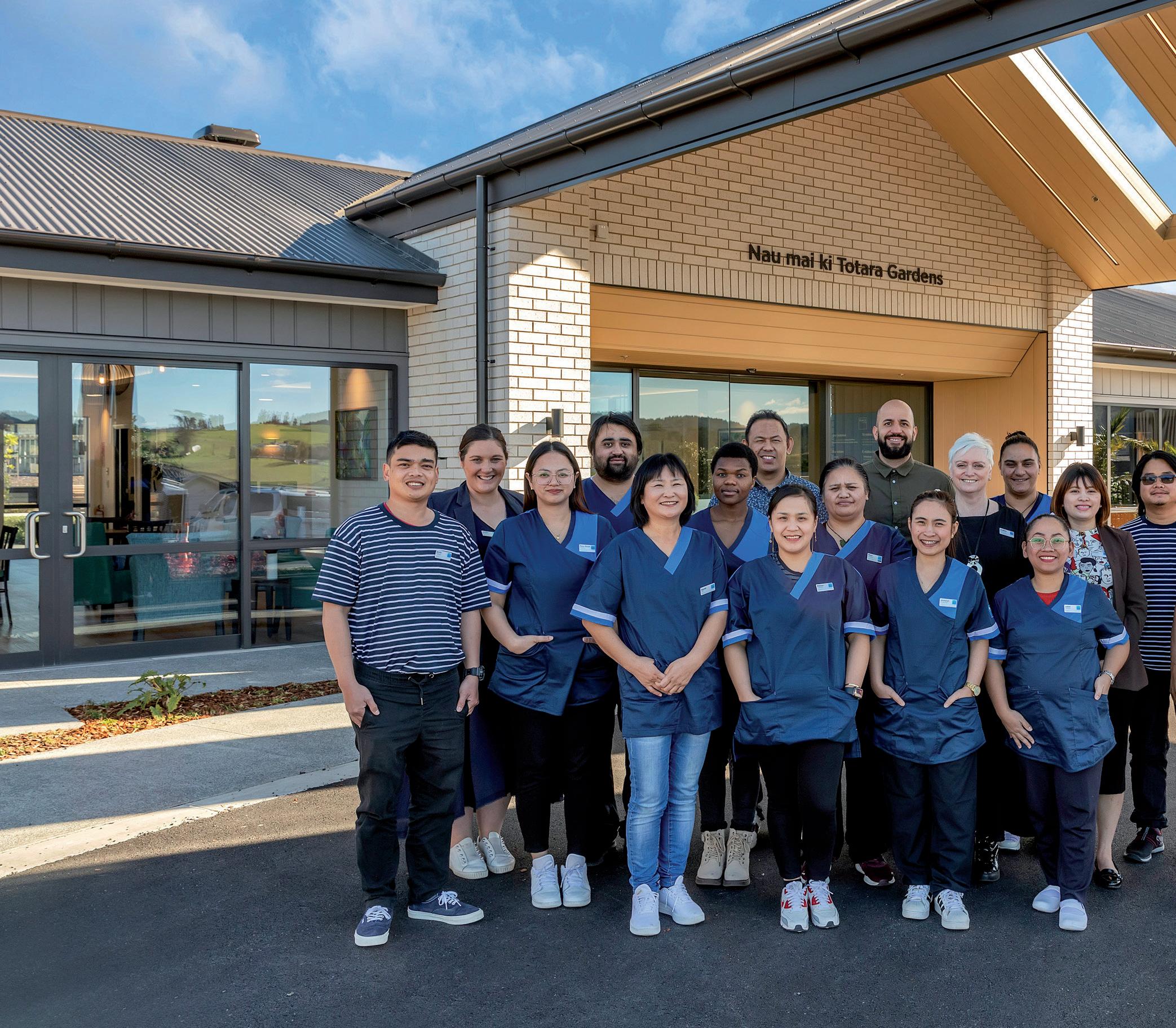
Increases aged care bed capacity in Te Tai Tokerau, Northland
upa has proudly unveiled its latest care home, Bupa Tōtara Gardens, in Whangārei, a modern facility that represents a significant investment in the Northland region's healthcare infrastructure. The $16 million, purpose-built care home provides 56 essential care beds, addressing the growing demand for quality care services in the area. This state-of-the-art facility is designed to offer a comprehensive range of care options, ensuring that residents receive the highest standard of support tailored to their individual needs.
The new care home has already welcomed 24 residents, making a promising start as these individuals begin to settle into their new surroundings. Audrey Bancroft, General Manager of Tōtara Gardens Retirement

Village and Care Home, emphasised the significance of this milestone.
"Welcoming our first residents into their new home is a significant achievement. The residents are not only enjoying the comfort of the new, purpose-built facility but are also quickly adapting to life at Tōtara Gardens," she noted.
Bancroft further elaborated on the extensive planning and effort that went into the development of Tōtara Gardens. "Building Tōtara Gardens has been a monumental task, with so much thought and clinical expertise invested in its design. We’ve also been fortunate to bring on board 45 new team members, all of whom have been carefully trained to deliver the level of care and service that Bupa is known for," she added.
The focus at Tōtara Gardens is on creating a warm, welcoming environment where strong
relationships can be forged between the care team, residents, and their whānau. Bancroft and her team are committed to providing personalised care that meets the diverse needs of their residents, whether they require support in the rest home, hospital care, or specialized dementia care.
To enhance the residents' experience, Tōtara Gardens offers a wide range of activities and outings, specifically designed to cater to varying interests and abilities.
"Our team is eager to get started with the activities and programs we've planned. We want to ensure that our residents not only receive excellent care but also enjoy a vibrant and engaging community life," Bancroft shared.
The development at Tōtara Gardens doesn’t stop with the care home. The next major project is the opening of 14 new serviced apartments, located above the retirement village community center. Scheduled to open ahead of time in September, these apartments offer an ideal solution for those who wish to maintain an independent lifestyle while still having access to essential domestic support services.
"The apartments are beautifully designed and will provide residents with the convenience of daily meal services, weekly housekeeping, and laundry support, all while allowing them to live independently," explained Bancroft.
Tōtara Gardens is strategically situated alongside an existing retirement village on Wairau Drive, which features 78 villas and a bustling community centre. This expansion is a testament to Bupa’s commitment to growing and enhancing the community, providing more care options for the region's residents.
"We have a vibrant, close-knit community here at Tōtara Gardens, and it's exciting to extend that sense of belonging to our new residents. Our goal is to offer a broad spectrum of care and living options, ensuring that we meet the needs of Northland’s aging population," concluded Bancroft.
With its combination of innovative design, comprehensive care services, and a strong sense of community, Bupa Tōtara Gardens is set to become a cornerstone of care in the Northland region, offering residents a place where they can feel truly at home.

Ryman Healthcare’s latest village, Miriam Corban Village, has officially opened in style. he grand opening event, attended by local politicians and community members, showcased the village’s modern and vibrant environment. More than 1.4 million hours of work were involved in laying 474,000 bricks and planting almost 20,000 trees and shrubs in the village’s vicinity.
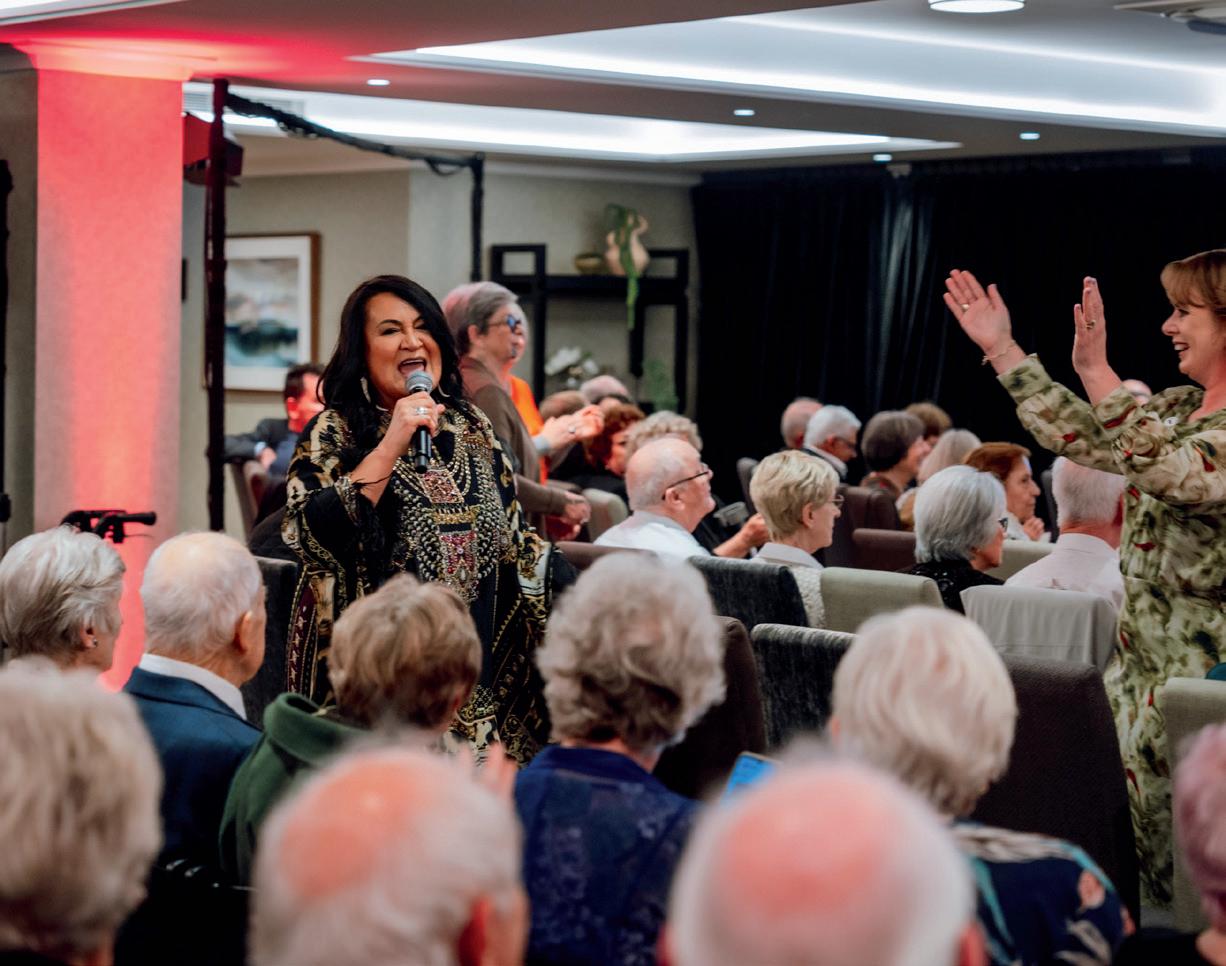
Ryman Healthcare’s New Zealand CEO Cheyne Chalmers said the village took an enormous amount of work and commitment to complete, all while navigating the stress and uncertainty of COVID-19 lockdowns and the increasing costs of construction.
“It is truly humbling for me to represent so many people at this event, so many people who have put their hearts and souls into this place already. It really is a tribute


to them, and I thank everybody for their contribution,” said Chalmers.
Chalmers added that it was an honour to have Ryman’s Henderson village associated with Miriam Corban, who is descended from Assid Abraham Corban, the Lebanese immigrant who began the Corban family’s long legacy of winemaking in west Auckland.
“When we announced we were building a village in Henderson and invited the community to suggest ideas for a name, the Corban name was a very popular suggestion.”
She added that although many expected long-time councillor and Mayor Assid Corban to be the naming choice of the village, the family suggested his wife Miriam instead.
Continued on page 16.
When
we announced we were building a village in Henderson and invited the community to suggest ideas for a name, the Corban name was a very popular suggestion.
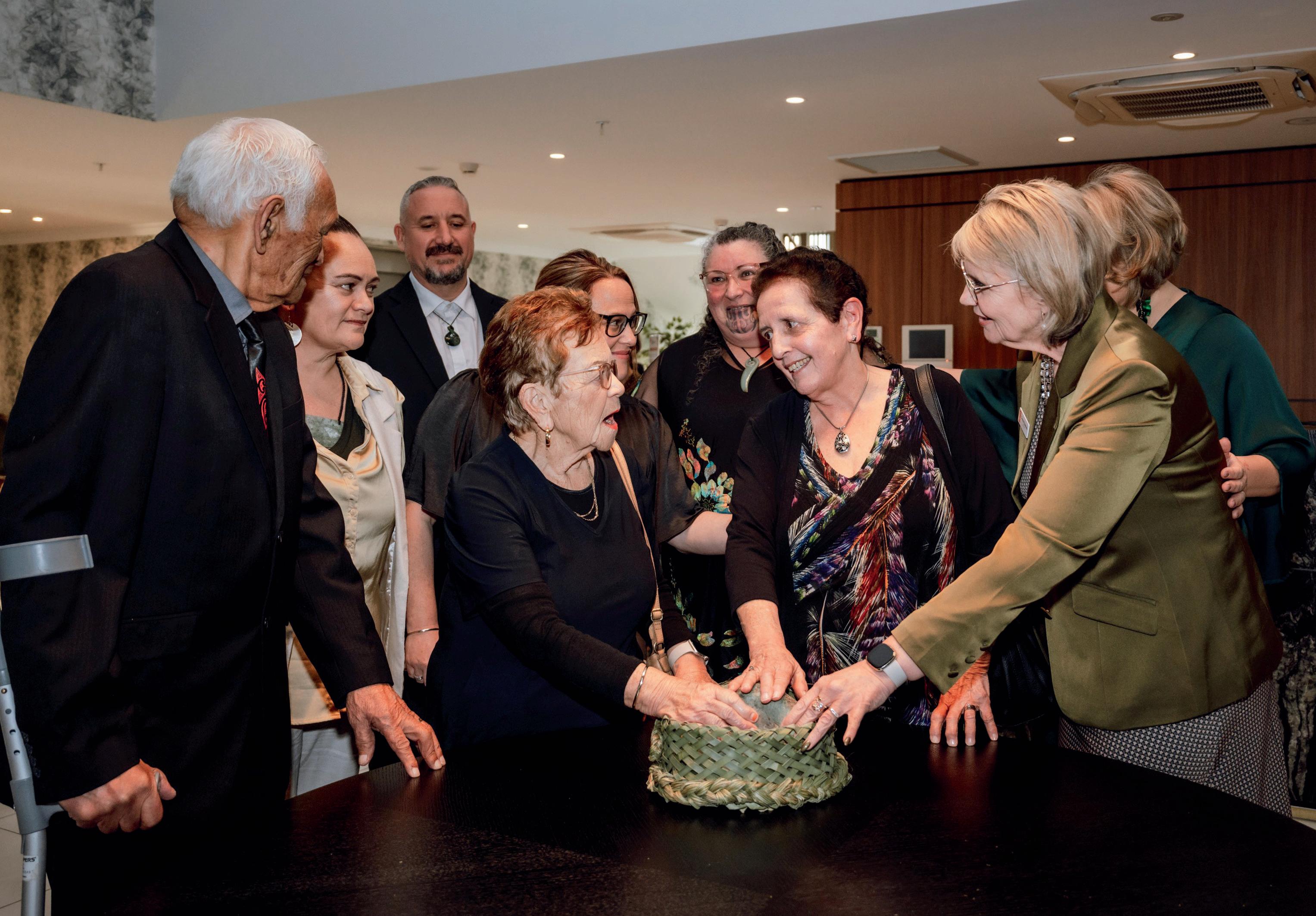

Continued from page 15.
“The more we got to know about Miriam Corban, the more everything pointed to this great woman as the perfect choice for our Henderson village.”
Corban’s daughter, Sharon Alexander, was on hand for the opening. She said that it was a proud feeling for the family everytime they passed the village on Lincoln Road.
“For our family, our mother was our taonga. In 2020, we were delighted and happy to give Ryman a part of our treasure – Miriam’s name for this village,” said Alexander.
A mauri pounamu had been placed on display in the village before the opening, and a karakia was led by Tyler Taua-Gordon, assisted by his grandfather George Taua and other local iwi representatives.
Taua-Gordon said the green stone captured everybody’s essence, the residents, in the history of the whare, the house and of the land.
Chalmers said not only did Miriam Corban support her husband as Mayoress, she campaigned tirelessly for new mothers with her role in improving maternal and ante-natal health one that could not be underestimated, having helped to transform the childbirth experience into something unrecognisable from what it was at that time.
The opening included the screening of two dance videos featuring residents, who had practised for many months beforehand.
Chalmers said this highlighted the wonderful connections that had been made among residents, and showed what a fun and vibrant place to live the village had become.
“It is truly humbling for me to represent so many people at this event, so many people who have put their hearts and souls into this place already. It really is a tribute to them and I thank everybody for their contribution,” she added.
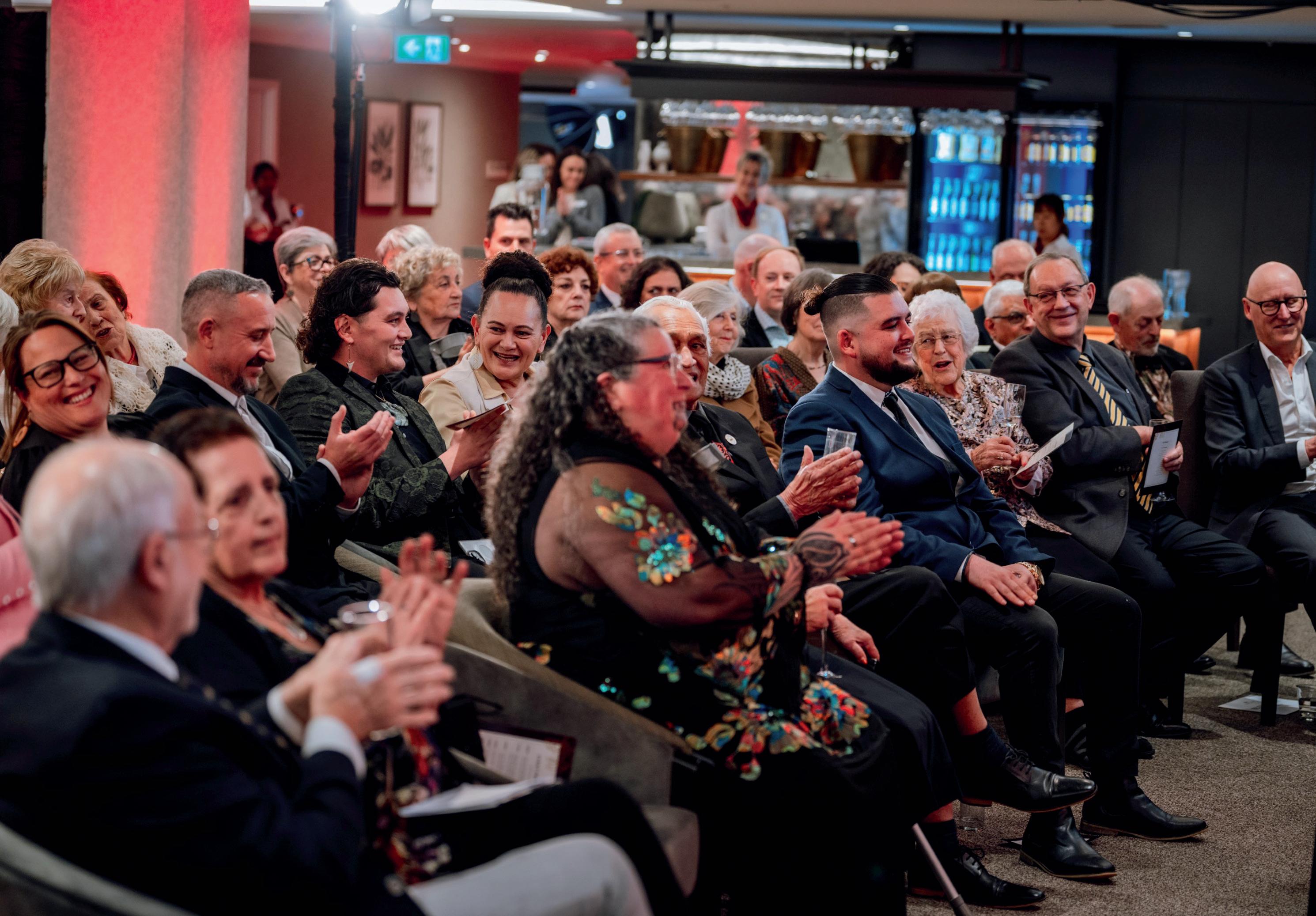
It is truly humbling for me to represent so many people at this event, so many people who have put their hearts and souls into this place already. It really is a tribute to them and I thank everybody for their contribution.
The event was concluded by a performance from popular entertainer Annie Crummer, who is herself synonymous with West Auckland. Crummer sang a selection of her hits to an enthusiastic crowd, including “For Today”, “See What Love Can Do”, and “Melting Pot”.
Alexander said that as a member of a great pioneering family of the west, the choice of the name of Miriam Corban for this village was fitting.
“Especially resonant to us is the Ryman
ethos ‘everything we do must be good enough for Mum and Dad’. The naming of the Ryman village is good enough for Mum, and a wonderful way to honour her for her lifelong service to the community in which she lived.”

Thames retirement village and care home, Bupa Tararu, has made significant strides toward a greener future, and has embarked on a programme of work to eliminate gas and become fully electric.
he first steps that were taken was to replace the domestic hot water gas boilers with hot water heat pumps. Installed earlier in the year, the new units are forecast to save approximately 10 tonnes of CO2e annually. This has highlighted the home’s commitment to reducing its carbon footprint and lessening its impact on the environment.
This project aims to test real-world cost and emissions reductions through a staggered approach to decarbonisation.
“Electrification is the future,” said Bupa General Manager, Jade Monigatti.
“By using hot water heat pumps, we not only reduce our dependency on gas but also take advantage of fully renewable energy sources via our electricity supplier.”
The hot water heat pumps used in the project are powered by 100 percent certified renewable electricity from Bupa’s nationwide energy supplier, Ecotricity. The pumps are two to three times more energy-efficient than conventional electric resistance water heaters. This efficiency has translated into reduced operational costs, although Monigatti emphasised that cost savings were not the primary driver for this initiative.
“Future-proofing, sustainability, protecting our environment through decarbonisation – these were our main goals,” Monigatti explained.
“While there are small operational cost savings, our focus is on ensuring the longterm sustainability of our facility and contributing positively to the environment.”
To ensure resilience in the face of increasing climate-related challenges such as severe weather events, the care home will retain a gas boiler even after fully electrifying its water heating system. This measure has been intended to safeguard the residents’ hot water needs during potential disruptions in electricity supply such as occurred during the severe weather and flooding events in past years.
“What we’re doing here at Bupa Tararu is a crucial part of our broader strategy to achieve sustainability through our entire portfolio of villages and care homes,” Monigatti added.
“We are committed to adapting to climate change and ensuring the well-being of our residents through reliable and eco-friendly solutions.”
Across 21 Metlifecare villages, there are resident-led ‘Enviro Groups’ that have driven impactful sustainability initiatives within their village communities.

ne of the most active groups has been the Sustainability Warriors of Pohutakwawa Landing Retirement Village in Beachlands.
The group is made up of avid gardeners who are on a mission to reduce waste and create a more sustainable way of life in the Pohutukawa Landing village.
For group member Richard Walters, the project has gone from strength to strength. Walters has looked after the village worm farms, which have had a wider village impact.
“Since they were put in place around nine months ago, they have taken around 100kg of kitchen food waste, and produced about the same weight in a carbon-rich mixture which then goes back into the ground to fertilise plants and vegetables. They also produce a worm juice that residents can help themselves to for fertilising their own plants,” said Walters.
At first, the group faced resistance from the village residents, who were unaware of the impact of worm farming. Walters said that if farmed properly, the worm farms can be odourless.
“Now that they’re up and running and people can see their value, and how much food
waste can be avoided, they’re in ‘boots and all’.”
In addition to the Sustainability Warriors, other resident-led sustainability initiatives have also also in full swing throughout the village.
Raised garden beds have been introduced for growing vegetables, and a ‘weekly weeders’ group has been established to ensure the gardens are kept in good condition. Walters said the work was worth the free morning tea, and it has become a great opportunity to spend time chatting with like-minded people.
The Sustainability Warriors were awarded a NZD $2500 grant from Metlifecare, which has allowed them to purchase quality gardening tools, rainwater barrels to irrigate the village gardens, and trolleys that have made it easier to transport gardening equipment and worm trays.
The raised garden beds are fertilised by the worm farms, and the vegetables grown are there for residents to help themselves to. Walters said it has become a nice circular system.
The group has continued to grow its strong base of supporters, and has many projects in its future pipeline. These include adopting new composting initiatives, establishing a soft plastic recycling programme, and amenities to recycle surplus household goods.
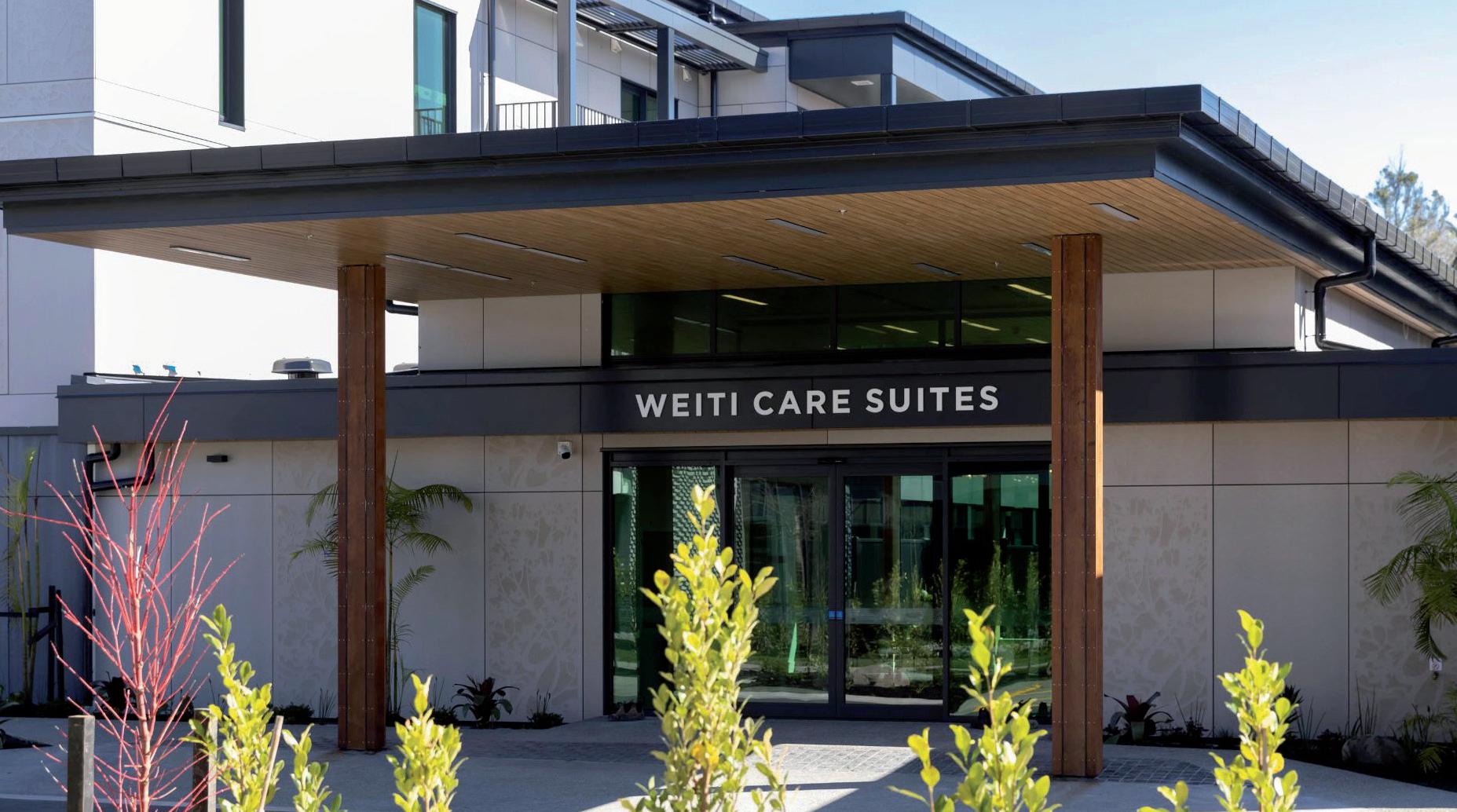
Metlifecare’s new ‘Weiti Care’ building, located at Gulf Rise Village in Auckland’s Red Beach, has officially become the first aged residential care home in New Zealand to be certified with a globally recognised Six Green Star sustainability rating. This was certified by the New Zealand Green Building Council (NZGBC).
chieving this internationally recognised rating, the highest possible for a commercial building, has become an assurance of the highest levels of conscious, eco-friendly design and development within the local aged care sector.
Michael Lisowski, Metlifecare’s Head of Delivery, said that Weiti Care has been constructed to the highest standards of sustainability, and the wellbeing and comfort of its residents was the top priority from the beginning of the planning stages.
“It has been built smarter, faster, safer, and quieter than traditional construction and is designed to operationally minimise energy consumption, water usage, waste generation and harmful emissions,” said Lisowski.
Weiti Care was constructed with a crosslaminated timber structure, a pre-panelised
façade system and off-site manufactured bathroom pods. These innovations reduced on-site construction waste, with more than 70 percent of waste diverted from landfill.
The low-carbon design has resulted in a structure with 34 percent less embodied carbon than a typical apartment building. The carbon reduction has reduced the global warming potential of the project, and has helped Metlifecare play its part in tackling climate change and its negative impacts.
“Essentially, we’re caring for our residents while caring for the environment,” added Lisowski.
He added that this care home could be the last home for some residents, therefore providing a life-enhancing environment for all those who live and work there, from better air quality and lighting right through to sound attenuation, was both satisfying and rewarding.
Weiti Care welcomed its first residents in 2023 and has offered 36 state-of-the-art care suites, including 13 purpose-built dementia suites. This has brought a much-needed premium rest home, hospital-level, and secure dementia care to North Auckland.
Weiti Care is the first six Green Star certified building developed and constructed by Metlifecare, with a further five care homes in progress across its portfolio, expected to be completed by 2027. Two of these new care homes, located in Kerikeri and Beachlands, are near completion and on track to be awarded Six Green Star certifications by the end of 2024.
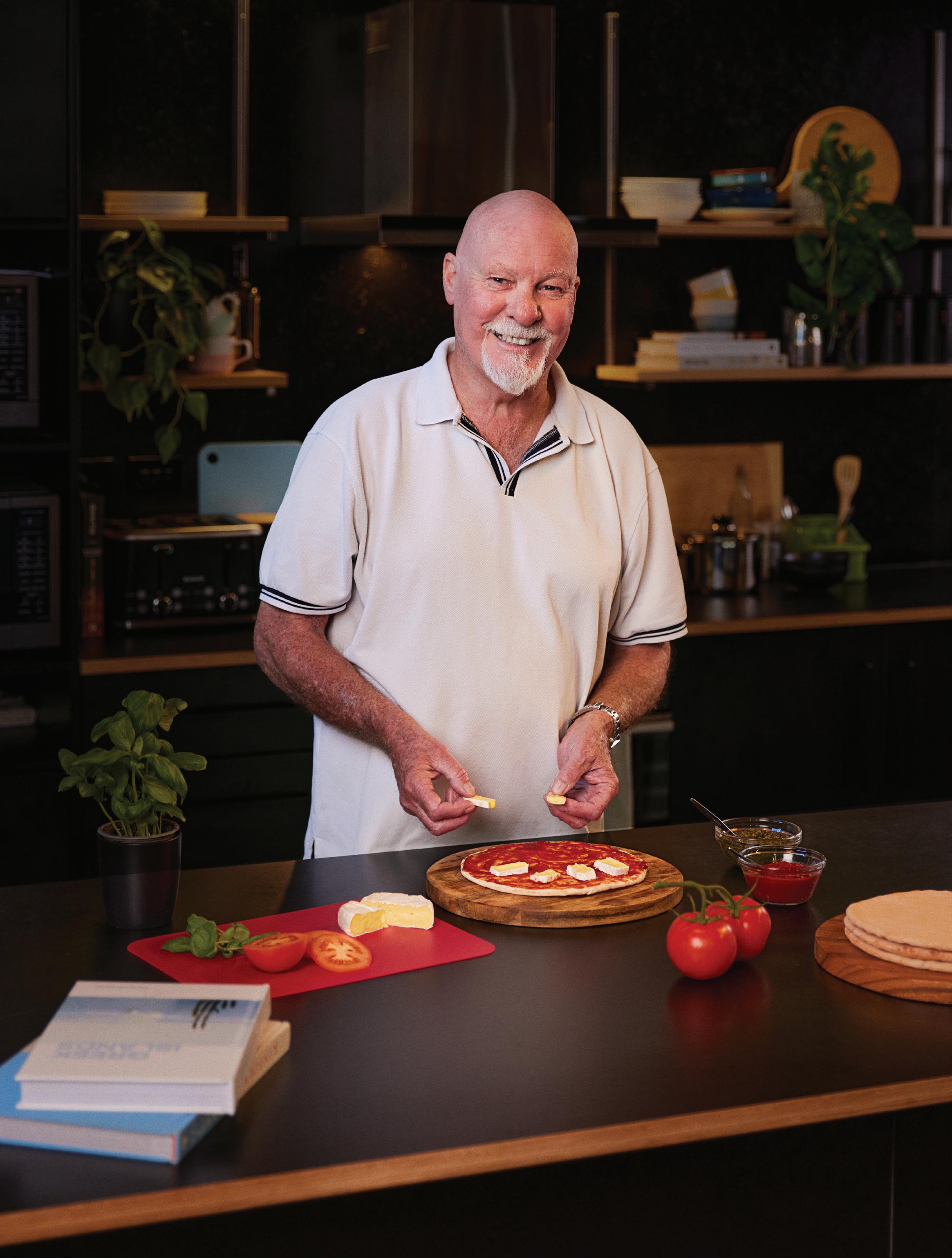
“I’ve swapped brie and other soft cheeses for hard varieties like cheddar, parmesan, emmental and pecorino. And if I can’t do without my brie, I always have it baked or on a pizza.”
As you age, foods you safely ate in the past may no longer be safe to eat.
Know the risks of listeria
In the aged care sector, planning for the future is not just a necessity - it’s a responsibility. Numerous reports have persistently raised significant concerns regarding inequities in access created by geographical and financial barriers, workforce pressures, and funding models that are no longer fit for purpose.

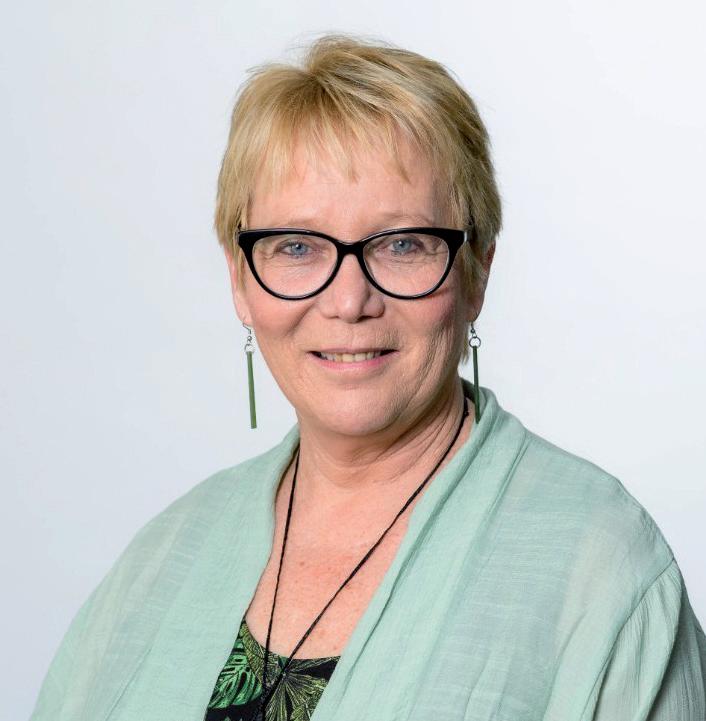
TRACY MARTIN Chief Executive Aged Care Association
his is why we are calling for the establishment of a ministerial taskforce, which includes peak body representation from the aged care sector, to design from the ground up a sustainable delivery and funding model for the continuum of care for our elders. A model that sets in place an evidence-based funding formula, a model that delivers different care options that better reflect the needs and circumstances of the elder, their family and whanau.
Calculated on a per bed-day basis (the daily cost of providing 24/7 care per resident), the current funding model not only doesn’t cover the cost of care, but it also shortsightedly leaves no allocation for property maintenance or capital investment. As our aging

population increases, we need a system that enables existing facilities to expand and new facilities to be built and be financially viable to meet demand.
Our elders deserve support when and where they need it, where they can remain connected to their loved ones; yet far too often they are forced out of their communities in the pursuit of aged care, displaced from their hometowns to the closest region with a vacancy at the appropriate care level.
Now, if you have reached this far and are still thinking “Retirement Village”, please take a moment to reset. We are talking aged care, not lifestyle choice. We are talking about New Zealanders whose average age when coming into residential care is 85, who are frail and need multiple levels of support.
Certainly, some Retirement Villages have care facilities - but not all care facilities have retirement villages. And certainly, some of those retirement villages offer a very upmarket lifestyle - but many of our members have villages that have been created by picking up elder housing responsibility when local government divested themselves of “pensioner housing”.
What this reinforces is that we need a diverse range of provision, for those that are both above and below the income and asset test thresholds set by the government, who live in small towns and large cities.
The current government have signalled a renewed focus on Public-Private Partnerships (PPPs) as part of their strategy to enhance infrastructure development in New Zealand. Wouldn’t it be wonderful if they considered the provision of seniors’ housing and residential care facilities as part of that vital infrastructure for our nation? By exploring PPPs for the aged care sector, we would be able to take some of the pressure off hospitals and ensure the provision of the 12,000 residential care beds that Te Whatu Ora themselves tell us we will be short by in 2032 – a mere eight years away.
There are of course a lot of variables here, but we believe that, depending on land acquisition and the consenting process, to build a 32-bed standalone dementia or psychogeriatric unit could take approximately six to seven years. So, we don’t have any time to waste.
We need to move with urgency towards a joint government/sector funding model that provides long-term security and enables providers, charities, not-for-profits, owneroperators and listed companies, to invest in the future of aged care.
It is vital that we have a practical and sustainable delivery and funding model for the continuum of care for our elders, covering home and community care, aged residential, and palliative care. We do not believe this can be achieved without active participation from those on the frontlines of aged care delivery.
Please join us in putting pressure on the government to create a taskforce that includes those on the front line to design an elder care system that truly works for everyone.


Keith Park Village Hobsonville, Auckland
For Ryman Experience Coordinator Maree Herman, no idea has ever been too small.
ince joining the Keith Park Village in March 2023, Herman has created exciting and memorable experiences that residents have loved.
Prior to joining the village, Herman worked in various sectors of commerce, from military to corporate roles, owner-operator companies to family businesses. She said that every role has been beneficial to her skillset and career. Her role as the project head for Burger King’s national uniform gave her more scope for development, whilst another highlight was being headhunted to work for Grant Dalton and Team New Zealand in Valencia.
Herman always knew she would be a great fit for working in aged care. Having seen how her father-in-law’s world changed with an intro to technology inspired her to want to give opportunities to others. She knew she wanted to work at the Keith Park Village in Hobsonville, Auckland, whilst it was still under construction. Herman knew she had found the right place during her interview when she was told that if the residents were
knitting, she should be knitting.
Throughout her extensive career in various industries, Herman said she has never had the support that she now has with Ryman.
“I never feel as though I don’t have help from others, it is incredible. Nothing is ever a problem,” she said.
She found joy in being able to use her initiative liberally, as the Village Manager has great faith in her ability, and this has given her the confidence to try new things in her role.
“My Village Manager is someone I admire and respect, and she makes the village so successful.”
In any job, there are always unique customers, languages and unforeseen challenges, which can make it interesting to say the least. Herman took over from another person in the role, and it took a bit longer than expected to gain the trust of the residents. After 15 months, they now know that she has their best interests at heart and is there to help them and improve their lives in the village.
Herman said that the ‘wins’ of the job are the moments when she has found someone’s passion and has given them a purpose.
“Everyone needs something to look forward to and a goal. When you turn up at a resident’s door to wish them a happy 70th and they cry with happy tears. When you help make connections and finally see a person interacting from their own initiative, I just want to cry,” she said.
“My cup is full regularly and I love it. You cannot pay me what I get from these types of interactions.”
To be successful in the role, Herman said it was important to be resilient, empathetic, authentic, a generous listener, kind and patient. She said it was also important to understand the audience, and to always deliver on what she said she was going to do and not ‘dilly-dally’.
Being able to see how people help and look after each other, and working alongside team members with similar values, has been a big buzz for Herman. She said there is nothing worse than working with people who don’t really care and don’t take the time to do things properly and tidily.
She has always enjoyed being around people, planning and being organised, which is where her inspiration stemmed from. She said this has driven her husband crazy,
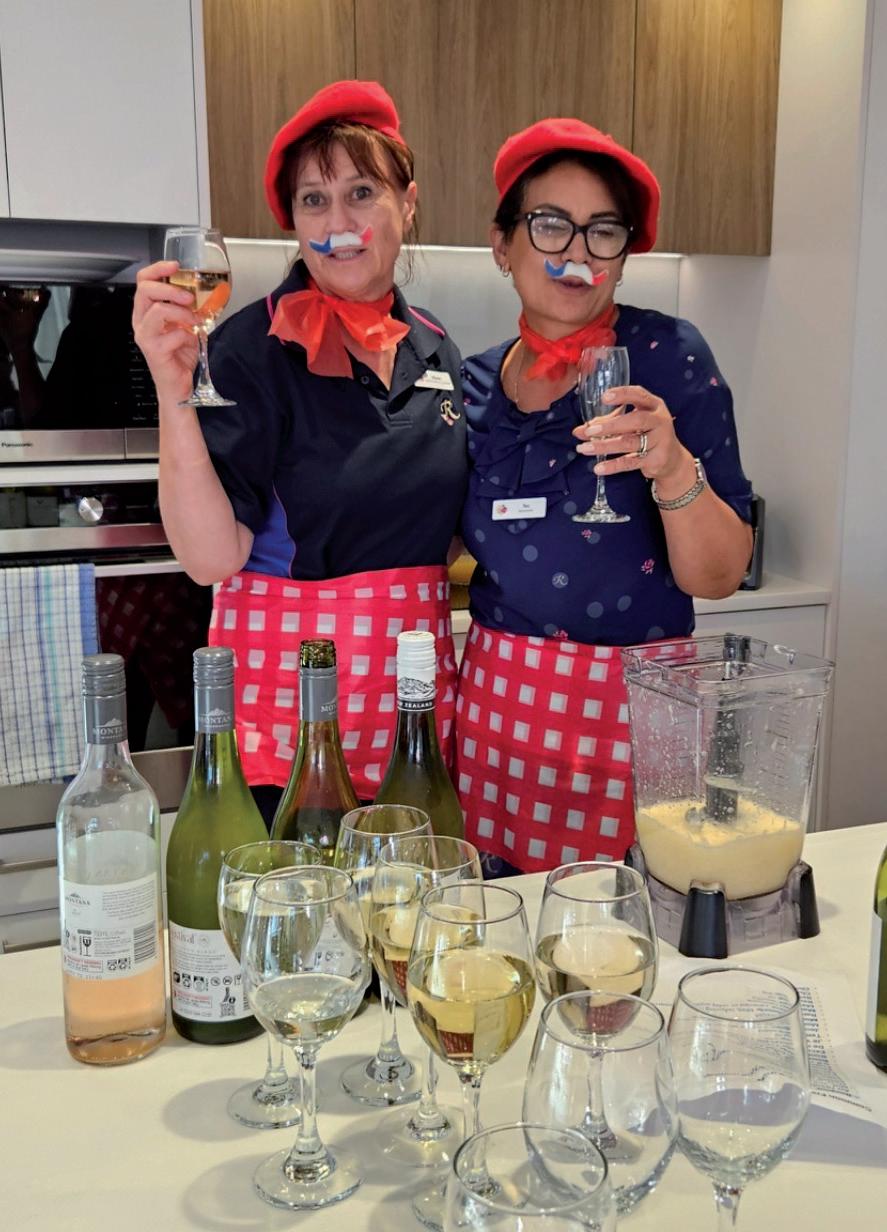
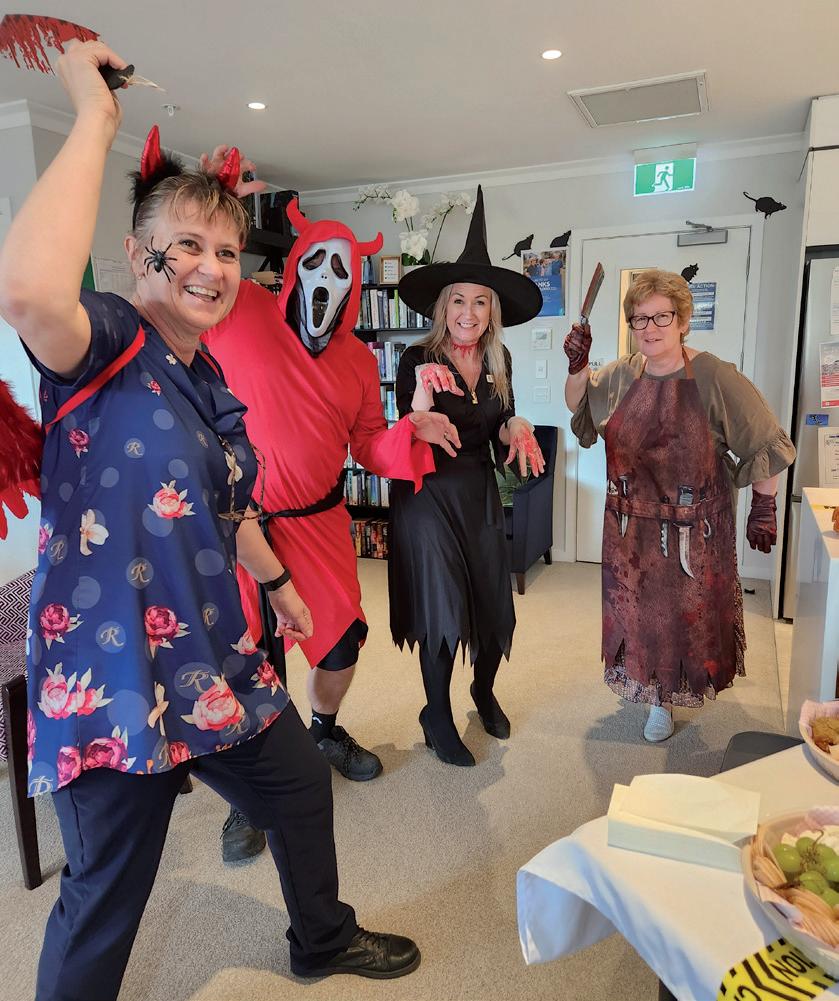
especially when on a busy-structured holiday.
In her spare time, Herman has enjoyed her involvement in community projects. She has been a part of Girl Guiding for more than ten years, where she has continued to allow her inner child to have more fun.
Her ability to curate memorable experiences for others has driven her desire to continue, especially for those who have never experienced anything like what she does.
